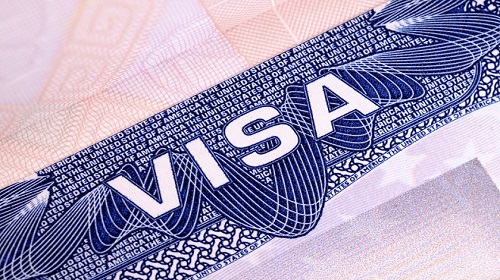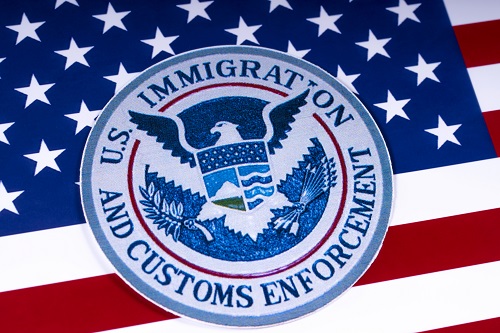H-1B Visas For Professional Workers

Purpose Of H-1B Visa Program
The H-1B Visa program allows U.S. employers to hire foreign national professionals.
An H-1B Visa is available for:
- Foreign national professionals engaged in a specialty occupation; and
- Foreign national fashion models of distinguished merit and ability.
There are three steps to the H-1B process:
- First, the U.S. employer must file a Labor Condition Application (LCA) with the U.S. Department of Labor.
- After receiving notice of approval of the LCA, the U.S. employer must file Form I-129, Petition for Nonimmigrant Worker, with the Bureau of U.S. Citizenship and Immigration Services.
- Upon approval of the Form I-129, the employee will either be issued a new I-94 Card to reflect the employee’s new H-1B status or will be permitted to apply for an H-1B Visa at U.S. embassy or consulate abroad.
The H-1B Visa is a temporary Visa. It is issued for three years and can be extended for an additional three years for a total of six years of H-1B time. An H-1B Visa does not lead to permanent residency. However, H1-B professionals do not need to maintain a foreign residence abroad and may pursue permanent residency while they are in the United States in H1-B status.
The H-1B Cap
Because of the high demand for professional workers in the United States, and the annual limit on the number of H-1B Visas (often referred to as the H-1B cap), the timing of H-1B petitions is critical.
Regular H-1B Cap – 65,000 Visas per year
Only 65,000 H-1B Visas are issued each fiscal year. Out of these 65,000 Visas, 6,800 are reserved for the H-1B1 program for nationals of Chile and Singapore.
The fiscal year is based on the date that the employee is allowed to start employment based on the H-1B Visa. For the 2011 fiscal year, that date is October 1, 2010. Employers are allowed to file H-1B petitions six months before the traditional October 1 start date. Thus, this year the Bureau of U.S. Citizenship and Immigration Services will begin accept H-1B Petitions on April 1, 2010.
The H-1B cap applies only to new employment of an H-1B professional. If an employer applies to extend the status of a current H-1B employee, the extension is not counted against the cap. Likewise, if an H-1B professional who has already been counted against the cap seeks employment with a new company, the new company may file an H-1B Petition without regard to the H-1B Cap. The only situation where this will not be true is one where the H-1B professional is moving from an exempt H-1B employer to a non-exempt H-1B employer. In this scenario, the H-1B professional had never been included in a previous H-1B Cap.
Exemption from H1-B Cap for Persons with a U.S. Master’s Degree or Higher – 20,000 Visas per year
The first 20,000 H-1B Visas issued to persons with a U.S. master’s degree or higher are exempt from the regular H-1B cap. Employers do not have to make a special showing that a U.S. master’s degree or higher is required for the position they seek to fill. Just the fact that the employee has a U.S. master’s degree puts the H-1B case within the special cap for persons with a U.S. master’s degree of higher.
H-1B Cap-Exempt Employers
Persons may be exempt from the H-1B cap if they work at an employer who is always allowed to sponsor a professional worker for temporary employment in the United States.
The rule is that the person must work at the employer who qualifies for an exemption, not that the person must be employed by the exempt employer. For example, a doctor employed by a medical group but who provides services at a university hospital would be exempt from the H-1B cap.
The following kinds of employers are exempt from the H-1B cap:
- Institutions of higher learning (universities and colleges) and affiliated organizations;
- Non-profits associated with an institute of higher learning; and
- Non-profit research organizations or U.S. government research organizations.
H-1B Specialty Occupation
The employer must prove that the position it seeks to fill belongs to a specialty occupation.. A specialty occupation is one that requires the theoretical and practical application of a body of specialized knowledge, along with at least a U.S. bachelor’s degree or its equivalent. The foreign national professional’s degree must be in a field that is relevant to the position. The Bureau of U.S. Citizenship and Immigration Services generally follows what is known as the three-to-one formula, where three years of experience equals one year of university education.
Examples of H-1B specialty occupations include accounting, architecture, business specialties, education, engineering, health and medicine, law, and theology. Although an LVN does not qualify as a specialty occupation for an H-1B purposes, certain nurse positions that require at least a bachelor’s degree may qualify.
Labor Condition Application (LCA)
The first step toward hiring an H-1B employee is the filing by the employer of a Labor Condition Application (LCA) with the U.S. Department of Labor.
The LCA serves two purposes:
- It protects U.S. workers by requiring employers to attest that employment of H-1B employees will not adversely affect the working conditions of U.S. workers similarly employed; and
- It protects H-1B professionals from exploitation by requiring employers to attest that they will pay the required wage, which must be the higher of the prevailing wage determination or the wage employers pay to employees in the same position.
Generally, the U.S. Department of Labor requires employers to submit the LCA electronically through its LCA Online System. Within one business day of filing the LCA, the employer must make available a public access file that may be viewed by any person. The public access file must include a copy of the LCA , a statement of the salary paid to the H-1B worker, the prevailing wage for the H1-B worker’s position, the source for the prevailing wage determination, and an explanation of how the employer determined the wage for the H-1B employee.
The H-1B Visa Petition
After receiving approval of its LCA, an employer must file Form I-129, Petition for Nonimmigrant Worker with the Bureau of U.S. Citizenship and Immigration Services. A copy of the signed, certified LCA must be included with the I-129 H-1B Petition.
Employers may file an H-1B Petition six months before the start of the fiscal year, which begins each year begins on October 1. This means employers may submit petitions starting April 1 of each year but the employee may not start work in H-1B status until October 1 of that year.
When filing the Form I-129, the employer must show that the position the employer is seeking to fill is one that requires a professional in a specialty occupation. The employer must also show that the foreign national professional qualifies for the position. This includes showing that the foreign national professional has the equivalent of a U.S. bachelor’s degree in a field relevant to the position and has any professional licenses, including state licenses, required for the position.
H-1B Filing Fees
Generally, an employer must pay three sets of fees for an H-1B Petition:
- The standard $320.00 filing fee for Form I-129, Petition for Nonimmigrant Worker (plus, any fees for Premium Processing and any applicable consulate fees if the employee is abroad);
- A $1,500.00 H-1B training and education fee (Employers with less than 25 or fewer full-time employees only have to pay a reduced fee of $750.00.);
- This fee was imposed by the American Competitiveness and Workforce Improvement Act.
- A $500.00 H-1B fraud detection and prevention fee.
H-1B Periods Of Admission & H-1B Extensions
H-1B Visas are issued for an initial period of three years, at which point the employer may apply for an extend the employee’s H-1B status for an additional three years. The maximum period of admission in H-1B status is six years. However, an exception to this rule exists for H-1B employees who have a PERM labor certification application, or a Form I-140, Petition for Alien Worker, that was filed on their behalf and that has been pending for at least 365 days before the expiration date of their six years of admission in H-1B status. In these cases, employers may apply for three-year extensions beyond the six-year period. The purpose of this rule is to allow H-1B employees who are being sponsored for U.S. permanent residency to remain in the United States while their applications for permanent residency are being processed.
H-4 Status For Family Members Of H-1B Professionals
Spouses and unmarried children under 21 of H-1B employees are eligible for H-4 status. Persons with H-4 status may study but may not work in the United States.
If you or a loved one needs help with your Austin immigration case, contact attorney Kate Lincoln-Goldfinch today!




